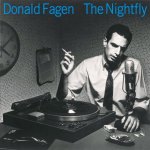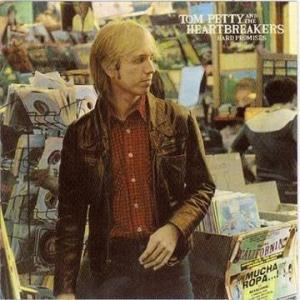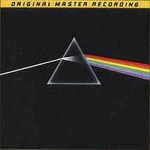
Pink Floyd Hot Stamper Pressings Available Now
Letters and Commentaries for Dark Side of the Moon
Breathe is my favorite test track for side one for any version of Dark Side Of The Moon, Half-Speed or otherwise. When the voices come in about halfway through the song, you can tell that most copies are too bright simply by listening to the vocals on this track. The cymbals might sound wonderful; lots of other instruments might sound wonderful; and there might be plenty of ambience, detail and transparency.
But all of that counts for nothing if the voices don’t sound right.
And on most copies the voices sound bright, aggressive, grainy and transitory. (This is the case with the 180 gram 30th Anniversary Edition, unfortunately. That pressing will wake up a sleepy stereo, but my stereo hasn’t been sleepy enough to play that recut for a very long time, and I hope you can say the same.)
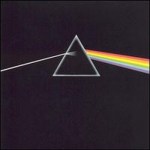 The discussion below may shed light on some of the issues involved in the remastering of Dark Side.
The discussion below may shed light on some of the issues involved in the remastering of Dark Side.
Of course, most audiophiles are still under the misapprehension that Mobile Fidelity, with their strict ‘quality control’, which they spend hundreds of words explaining on their inner sleeves, eliminates pressing variations of these kinds.
Isn’t that the reason for Limited Edition Audiophile Records in the first place? The whole idea is to take the guesswork out of buying the Best Sounding Copy money can buy.
But it just doesn’t work that way. I hate to be the bearer of bad news, but our entire website is based on the proposition that nothing of the sort is true. If paying more money for an audiophile pressing guaranteed the buyer better sound, 99% of what we do around here would be a waste of time.
Everybody knows what the audiophile pressings are, and there would be nothing for us to do but find them and throw them up on the website for you to buy. Why even bother to play them if they all sound so good?
Mobile Fidelity
If you’ve spent any time on the site at all you know we are not fans of Mobile Fidelity’s mastering. There are a few potentially excellent MoFis, and certainly Dark Side Of The Moon would be included in that group.
But it’s vitally important to keep in mind that the average copy of DSOTM on MoFi is not at all good. We had a 2-Pack a while back that illustrated that point perfectly — two copies, each with one amazing side and one mediocre side, allowing the buyer to hear for himself the good and the bad side of Dark Side. We wrote:
The person who buys this two LP Package will have the opportunity to hear for himself just how bad most MoFi pressings of Dark Side are. With these two LPs, you are getting an Amazing Side One and an Amazing Side Two – just not on the same piece of vinyl. (The joke here at Better Records is that I should label which side sounds good and which side doesn’t in case the buyer has trouble telling them apart. Since so many audiophiles like so many bad sounding records – don’t get me started – this is not as ridiculous as it sounds. But the difference between the two sides is so OBVIOUS that virtually anyone will hear it. (Even those people who still think that MoFi was a great label.)
$250 is a lot to pay for the MoFi of Dark Side Of The Moon. But consider this: the UHQR sells for two to four times that amount, and doesn’t sound as good as the Hot Stampers found here. Of course, the people that buy UHQRs would never notice that, because they would have simply assumed that they had already purchased the Ultimate Pressing and wouldn’t need to try another. [More on that kind of mistake here.]
The complete text for our Mobile Fidelity shootout can be found here.
I was guilty of the same Mistaken Audiophile Record Collector Thinking myself about 40 years ago. I remember buying the UHQR of Sgt. Pepper in the early ’80s (right before the box set came out in ’83) and thinking how amazing it sounded and that I was so lucky to have the world’s best version of Sgt. Pepper.
If I were to play that record now, I suspect that all I would hear would be the famous MoFi 10K Boost on the top end (the one that MoFi lovers never seem to notice) and the flabby Half-Speed mastered bass (ditto).
Having heard plenty of good pressings of Sgt. Peppers, like the wonderful UK reissues we regularly put on the site, I suspect that now the MoFi UHQR would sound so phony to me I wouldn’t be able to sit through it with a gun to my head.
Back to Dark Side. We’ve found that the album, along with the others linked below, is helpful for testing the following qualities:
- Midrange Tonality
- Midrange Presence
I would make one other quick point here. The bad MoFi pressings of Dark Side are veiled and recessed in the midrange on Breathe. I remember playing the record in the ’80s and thinking how muffled it sounded on that song. Looking back and thinking about those days, I realize I had a lot to learn, about a lot of things. I had no idea that MoFi’s standard operating procedure was to suck out the midrange. Here is another, equally famous MoFi with similar midrange issues.
- Upper Midrange Brightness
(more…)
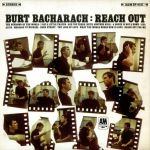
 More of the Music of Antonio Carlos Jobim
More of the Music of Antonio Carlos Jobim